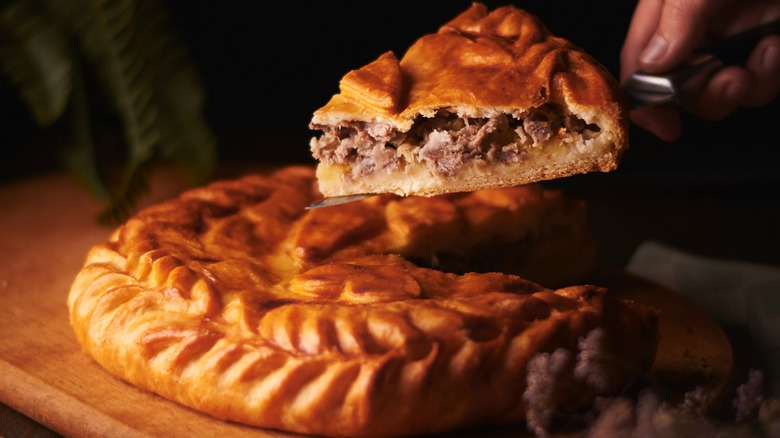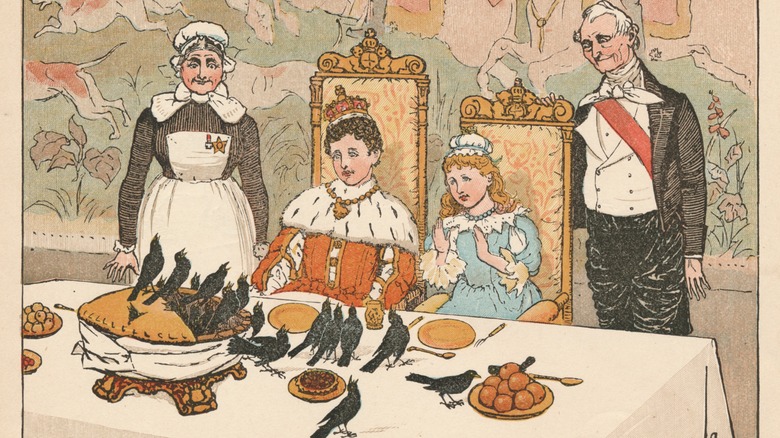Pot Pies In Ancient Rome Had A Wildly Different Presentation
Many of us grew up diving into classic chicken pot pie, one of many types of meat pies from around the world. Historically, meat pies date back to Ancient Egypt and Greece. Although the phrase "pot pie" wasn't in use, descriptions of these ancient pies are similar to the pot pies of today. In Ancient Rome, however, thr crust was different from modern-day pie crust. Made only with flour and olive oil and baked rock hard, Roman pie crust wasn't eaten. They were usually stuffed with cooked meats, oysters, lampreys, and fish, and when everything was consumed, the crust was tossed out.
When the Roman meat pie evolved into a special occasion meal for the rich, things got lively. Some inventive Roman chefs glammed up their pies by filling a pre-baked crust casement with live birds, which were covered with a pre-baked top crust. The pie was then presented to wealthy nobles, and when it was cut open, the trapped birds flew out in a flurry.
Roman sailors took pies northward, but they were just used as a means for the preservation of meat. The first evidence of the English word "pie," as we currently use it, appeared in the early 13th century. Although its exact etymology isn't known, it could have been derived from the Roman word "pica," which translates to "magpie," a black-and-white bird found in Rome.
The 16th century recipe for Flying Bird pie
"Four and twenty blackbirds, baked in a pie" isn't just a phrase in a nursery rhyme. Some theories link the phrase to Henry VIII's wives or the pirate Blackbeard. But it's likely that the rhyme was referring to live bird pie, which became a food fad in the 16th and 17th centuries. The first recipe for live bird pie is found in "Libro de arte coquinaria" (translated as "The Art of Cooking") published in the 15th century. "The Art of Cooking" is a collection of recipes created by Maestro Martino, an Italian chef who cooked extravagant banquets in Rome for Cardinal Ludovico Trevisian and Popes Paul II and Sixtus IV.
Maestro Martino's live bird pie recipe, called "Flying Pie," gives the instructions for baking a deep and wide mold made of pastry crust. An actual filled pie was placed in the center of the mold, and the empty space around the pie was filled with as many small birds as it could hold. Just before serving, the mold was covered with a pastry lid, and when cut open, the birds escaped. The real pie in the center was then served, which was probably not terribly hygienic to eat. Robert May, a 17th-century British chef, took the Flying Pie to the bizarre side by stuffing it with live frogs, which he said in his cookbook, "The Accomplisht Cook," caused "the Ladies to skip and shreek."

